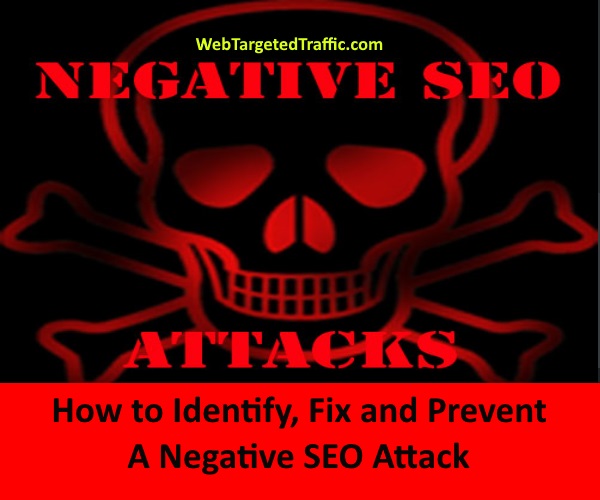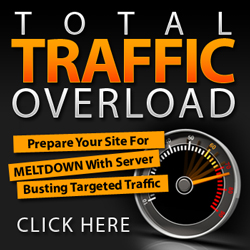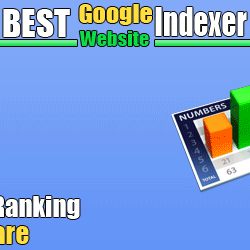Table of Contents
What Is Negative SEO?
Negative SEO is the act of using Black Hat SEO on other websites in order to get them penalized by Google. Negative SEO can also include reducing the effectiveness of a website’s SEO properties by disabling or altering them.
Negative SEO attacks can take a number of different forms:
- Hacking your website
- Building hundreds or thousands of spammy links to your website
- Copying your content and distributing it all over the internet
- Pointing links to your website using keywords like Viagra, poker online, and many others
- Creating fake social profiles and ruining your reputation online
- Removing the best backlinks your website has
Dealing with Negative SEO techniques can be quite tricky since some of them is out of your control, like pointing bad links (a.k.a link bomb) to your site. Another thing is, they are also a bit hard to detect.
Unlike some hacking practices that aim to deface or simply take down a website, a Negative SEO attack doesn’t affect a website’s look and feel.
Instead, the effects are only apparent once your website takes a dip in search ranking and incoming traffic.
How To Identify Negative Seo
Sudden drop in search traffic—If you notice a sudden drop in your search traffic, chances are you are a victim of negative SEO. That is if you have not done anything wrong yourself.
Penalty notification from Google—Google is very vigilant. If your site is a victim of negative SEO tactics such as keyword stuffing, broken links, spammy links sharing or content milling, you will get a penalty notification from Google.
Drop in keyword ranking—If indeed you are experiencing a drop in search traffic, then it is possible that your keyword rankings have dropped too. It is advisable to use tools like Ahref’s Rank Tracker or Link Research Tools to monitor the performance of your keywords.
A drop in your website’s speed—Another sign that you are being affected by negative SEO is a drop in your site’s speed. You can use Google PageSpeed Insights to test the speed of your site and identify any issues that may have been affecting your site’s performance.
Fake link removal requests—This is becoming quite common. Sometimes, you might receive link removal requests that seem sneaky. The aim is to remove quality links from your website. If you receive a link removal request of links from reputable websites, then it is a red flag.
When Does Negative SEO Happen?
Negative SEO usually happens when another individual or company has a very strong desire to push you out of the rankings for a specific keyword. It can happen at any time—after you have been around for several years, or while you are a new company.
How Common is Negative SEO?
Google tries to make negative SEO very difficult to accomplish. Additionally, it takes a significant amount of time, resources, and ability to launch a negative SEO attack against another website.
Moz’s Dr. Pete has a thorough review of negative SEO, and the likelihood of it happening to you, in this post. Although some of his remarks are meant to be humorous, he does have a good point: attacks against your site are not all that common, and what many people think is an attack is really just typical behavior.
Many common events are usually mistaken for negative SEO. As Dr. Pete says, if your link profile—that is, the overall landscape of links pointing to your site, ranging from positive to negative—is mostly bad, some random links that occur without reason could push it past the breaking point and cause you to acquire a penalty. You may perceive this as an attack, but it could really be partially your own doing.
Google also tries to make negative SEO difficult to accomplish by disregarding “junk” links that build up over time. Since anyone can link to anything with or without reason, Google isn’t going to penalize you for getting links from sites you’ve never contacted that have nothing to do with you. Essentially, the bigger you get, the more random links you’ll obtain, and the less weight Google will put in them.
But Why Would Anyone Commit A Negative SEO Attack?
Similar to hackers, people who do Negative SEO attacks might do it for various reasons. It can be intentional, such as sabotaging a competitor’s website, extortion or simply for fun. Do not be surprised you will find plenty of these Negative SEO Services online easily.
And believe it or not, an unintentional Negative SEO attack can also happen. There are cases where family members, employees or even hired SEO agencies deliberately do obsolete Black Hat practices on behalf of the owner thinking it will help their website ranking.
Types Of Negative SEO Attack
Just like normal SEO, Negative SEO also have both on-page as well off-page aspect to it:
Negative Off-Page SEO
As the name implies, Negative Off-Page SEO attacks without internally changing your website. Mostly it revolves around using Black Hat or negative SEO link building practices and points them to the target website:
-
- Link farms are a series of web pages created for the sole purpose of linking to another page on the web.Ordinarily, inbound links are a good thing that helps to improve your site’s ranking… but if you have a lot of links coming in from same unrelated, spammy websites, it tells Google that you are trying to artificially increase the number of links pointing to your page by creating link farms and you will get penalized.
No, not exactly like that…
In a Negative SEO attack, malicious parties will create obvious link farms and heavily link to the target website.
Sometimes they will also purchase link farm services or buy site-wide ads to achieve the same effect. Since it’s hard for Google to tell who’s responsible for the links, it can lead to a Google penalty on the target site when detected.
- Copyright complaints are a bit more complex, but at their core, they usually involve a someone claiming that you’ve posted material that belongs to them.In many cases, this can result in an automatic removal of the page for up to 10 days – and wouldn’t it be just awful if your landing pages vanished right in the middle of your biggest campaigns?
- Finally, competitors can falsify duplicate content – basically just copying and pasting your web pages over and over, maybe even as part of those link farms we discussed above.An influx of duplicated contents across domains might signal a manipulation attempt to get multiple different websites ranking with the same content. This used to be a popular Black Hat SEO technique before Google started cracking down on it.
- Link farms are a series of web pages created for the sole purpose of linking to another page on the web.Ordinarily, inbound links are a good thing that helps to improve your site’s ranking… but if you have a lot of links coming in from same unrelated, spammy websites, it tells Google that you are trying to artificially increase the number of links pointing to your page by creating link farms and you will get penalized.
Massive amount of duplicate content can land you a penalty even if you’re not the one responsible behind it.
As you can see, there are many different ways for negative SEO techniques to be done to your website… but no matter how tempting they might be, you should never even consider doing any of these yourself.
Even if it works in the short-term, it’s not going to be effective forever… and could land you in serious legal trouble if anyone can prove you were behind it.
Negative On-Page SEO
This form of attack is a little different, and generally focuses on hacking into your site and changing things around. With as little as a few minutes to start messing with your setup, a hacker could easily disrupt your site’s coding, introduce viruses, and generally wreak havoc on everything you’ve tried to build.
The real threats are the ones that are hard to see, though, and consist of the following:
-
- Negatively altering your SEO properties: Let’s be honest – are you really that likely to notice if someone changes all the alt text on your pictures to be less effective? A lot of basic SEO techniques are intended to be “set and forget”, and that’s what can leave you vulnerable to on-page negative SEO strategies.
- Changing the Robots.txt: This is easily one of the most important files on your site when it comes to SEO because it tells crawlers how to interact with your site. It is normally used to tell Google which part you don’t want them to crawl and index such as a live but unfinished page. An attacker with access to your site can easily modify the robot.txt to tell Google to ignore important pages or even the whole website.
A small change is all it takes to tell Google to completely ignore a website.
- Modifying Redirects: Search engines have an opinion on certain error pages – namely, they’re bad. Sites that automatically redirect from bad pages generally aren’t penalized too much, but if your redirects are changed, disabled, or scrambled, you could find yourself plummeting down the ratings.
The good news, as we’ll discuss later, is that on-page negative SEO attacks are much harder to perform… and much easier for a competent programming team to fix, too.
How To Prevent Negative SEO
1. Perform Regular Link Audits.
It is advisable that you perform regular link audits. This will save you a lot of stress and money if you ever become a victim of negative SEO tactics. This is probably the safest way to stay safe and identify malicious activities before they harm you. Don’t forget to watch out for incidents of sharp drop or rise in website traffic if you haven’t been working on link building. As we have already mentioned, you can use tools like Open Site Explorer and Ahrefs to manually monitor your links. Link Research Tools also offer wonderful tools that you should try.
2. Set Up Webmaster Tools Email Alerts.
You can set up Google Webmaster Tools alert so that you get email alerts whenever:
- You page(s) are indexed on search engines
- Spyware or Malware is attacking your site
- Your server has problems
- You have been manually penalised by Google
All you need to do is just to create an account with Google Webmaster Tools and click “Webmaster Tools Preferences.” Then enable email notifications and select the type of email alerts you would like to receive.
3. Watch The Speed Of Your Site.
See whether the speed of your website is steady. As you already know, the speed of your website is a key determinant. If you have discovered that your website is becoming slower than normal without any apparent reason, you should start looking for any suspicious activity in your website. If you are unable to find anything and the website is still sluggish, then you might be a victim of something called forceful crawling. What happens is that forceful crawling causes heavy server load which might lead to website crash. In that case, it is advisable to contact your webmaster or hosting company to try and determine the real cause of your site’s slow page loading speed. In some instances, you might have to find the perpetrators manually.
4. Protect Your Best Performing Backlinks.
Your competitors might try to bring down your best performing backlinks by tricking website owners into pulling them down. They try to use the name of your website as well as your name and request the webmaster to remove your backlink. In order to prevent this from happening, here are some suggestions:
· Always use one email to communicate with webmasters who are hosting your backlinks. Advise them to ignore emails that come from other addresses, especially from Yahoo or Gmail. This is the best way a Webmaster can tell whether it is you or not.
· Keep track of your best performing backlinks and inform the website owners that you have no intention of taking them down. You can add tags to your best backlinks so that you are notified every time they are removed.
5. Avoid Content Scraping.
Google hates content scraping. If you use duplicate content, Google will notice that. They normally pick one version of the content and use it to rank. So you should really be worried when someone picks your content and distributes it all over the Internet. You can use plagiarism tools like Copyscape to find out if your content has been copied. If you find that your content has been scraped, write to the webmaster and ask them to take it down.
If that option fails, you can notify Google by filing Digital Millennium Copywrite Act (DMCA) which allows webmasters to complain about duplicate content. When sending your concerns, try to give as much detail as possible. If you succeed in removing the duplicate content, you will see a rise in traffic.
Your website is your business and Google is probably your major source of traffic. Therefore, it pays to pay a particular attention to the SEO performance of your website and catch any malicious SEO tactics that are aimed at your website. It is better to monitor and prevent negative SEO than to wait until things get out of hand. If you stay vigilant, chances are you will stay safe. Take time to monitor your backlinks, website traffic, website speed and even your social media links or mentions. By all means, remain in control.
Identifying a Hacked Site
If your site has disappeared from the search engine rankings, and you’ve been noticing some suspicious links lately, your first reaction may be to say “someone came after me!” However, the truth may actually be that you are suffering from a completely different kind of penalty altogether.
Truthfully, those links may have nothing to do with your site having problems. The real issue may be that your site has been hacked, and has been removed from search engine results so that it does not unintentionally harm others or infect other websites.
You can confirm this for yourself by checking Webmaster Tools for a message about hacking, spam, or malware. Google has a help page here that offers information on hacking, as well as information to help you remove any malicious files and request a review of your site.
Non-Harmful Links
As we already mentioned earlier, strange links from sites you aren’t familiar with are a regular part of the Internet. If these links don’t use spammy anchor text or link to you thousands of times, they really offer no cause for concern. You may think they’re harming you, but they’re probably being ignored by Google as it is.
If you really don’t feel comfortable allowing these links to stick around—that is, if you’re worried they could become harmful in the future, or are concerned they might be causing issues already—you can disavow them. Google has information on disavowing links on this page. However, use caution: disavowing links that are helping you rank can cause big problems for you, and may even cause severe damage to your visibility and traffic.
How Can I Recover from a Negative SEO Attack?
Most negative SEO attacks come in the form of an outright website hack, spammy links, and fake reviews.
There are clear signs that your website has been attacked. Regular maintenance of the website can detect formatting and coding issues caused by a website hack. Looking into the analytics of the website and noticing sharp increases or decreases in website traffic and bounce rate are red flags that something is going on.
How do You Know Your Website Has Been Attacked?
When you look in your website analytics, an ideal, normal graph will show a gradual increase in backlinks and linking domains.
If the graph for your website shows sharp spikes or drops, beware. Pay special attention if you notice sharp drops or spikes when you haven’t been working on link building. These are big red flags.
You should also regularly look at the content on your website and the links within the content.
If your website gets hacked, for example, your content may include additional spammy links and links that get redirected to either a competitor’s website or another inappropriate site.
How Fast is Your Website?
If you notice a sudden slowdown in your website’s load speed, it is possible that your website has gotten hit either by a virus, hacker or with negative SEO.
A negative SEO strategy involves crawling a website. This “forceful” crawling of the website puts strain on the web server, causing the website to slow down or even crash.
The speed of your website is a prominent ranking factor for search results. If you don’t contact your web hosting provider or webmaster immediately, you’ll get a lot of frustrated website visitors and lowered search result rankings.
What to do if Your Website is a Victim of Negative SEO?
If you suspect your website has been attacked with negative SEO, there are some things you can do to prevent further, even irreversible damage.
It is imperative that you take immediate action to resolve these issues and alert Google of the attack. When you’re up-front with Google about it, and it is seen that you’re addressing the issue, Google will not likely penalize your site for the apparent unethical SEO practices.
Here are some steps you can take to both mitigate a negative SEO attack and prevent one from occurring in the first place:
1. Identify the Harmful Links
Your first step will be to identify the links that are harming your site. If you’ve been penalized, or are really under attack, chances are good that there will be hundreds of links… if not thousands… pointing at your site that you want to remove.
There are a variety of link audit tools that you can use to perform this step, or you can review your incoming links in Webmaster Tools to manually identify the links that you’d like to keep or remove.
2. Ask for the Links to Be Removed
The first thing that Google will recommend you do is ask for any links to be removed. Even in the case of intentional bad links placed on websites by competitors or malicious parties, you may have a chance to get them taken down just by asking.
Send polite emails to the sites where you have found these links, asking for the links to be removed (or at the very least, changed to nofollow, which means they have no weight). Your email should contain the following:
- Your name, position, and contact information
- The page(s) where you found the link(s) you want removed
- A deadline for the removal
Log your activity on a spreadsheet so that you can keep track of who you have contacted, when, and what kind of response you received. This spreadsheet will also help you create a disavow file, which we’ll cover in the next step.
If you’re asked to pay to remove a link, or met with any kind of refusal or threat, don’t worry about it: any links that aren’t removed can be disavowed, which is Google’s way of removing their power. Just set a deadline by which you’ll take action on any links that haven’t been manually removed and stick to it.
3. Create and Upload a Disavow File
If you reach the deadline you set on the links you asked to be taken down, and you still have links left over, you’ll need to move on to creating a disavow file. Google allows website owners to disavow links—that is, effectively strip links of their power—but warns that disavowing can be harmful to websites if used inappropriately.
Only disavow links that you are absolutely certain are hurting your website. A thousand links from a spammy gambling website are fine to disavow. However, a link or two from a blog in a different industry aren’t necessarily hurting you, even if they look strange. You should focus on taking care of the ones that are clearly suspicious or placed with malicious intent. A link to your site with the anchor text “[brand name] handbag” from a gambling site is malicious and probably designed to hurt you. A link with the text “read this,” not so much.
Export the list of links that haven’t been removed from your spreadsheet. You’ll need to create a text file containing the list of links (or full domains) you want to disavow, then upload it in Webmaster Tools. Google has a page on disavowing links to your site with detailed instructions on creating and submitting this file right here.
4. If Penalized, Submit a Reconsideration Request
It will take time for Google to process the links in your disavow file. Once this has been completed, however, you should be ready to proceed with the final step in your recovery process.
Many times, website owners only find out they are dealing with negative SEO, or are the recipient of bad links from a competitor, only when they receive a manual action (or penalty) from Google. If you received an unnatural links penalty as part of a negative SEO attack, you will need to submit a reconsideration request to get back into the search engine results.

Final Thoughts…
While negative SEO attacks aren’t the same as cyber-attacks, they both can negatively affect your website’s search rankings. When Google detects a site that has been potentially hacked by a cyber-attack, the site is flagged with a line warning the website has been compromised. Usually this somber warning is enough to scare much potential website traffic away.
To guard your website against cyber-attacks, make sure your web security is up to date and working. Some suggestions for a more fully protected website include installing security patches on your website software, migrate the site from HTTP to HTTPS and making sure your content management system (CMS) is equipped with user encryption protection.
If your website has been the victim of a negative SEO attack, you don’t have to panic. You do, however, have to act quickly to resolve the issue before it snowballs into a bigger problem with potentially irreversible consequences.
Not all negative SEO attacks are readily noticeable.
Make no mistake – negative SEO attacks are a real threat, they’re just not a common one. And even though you can disavow links or report them to Google, it might take some time before Google can conclude that you are innocent and not the one who’s behind the Black Hat practices.
It’s better to be safe than sorry. Now that you know what is negative SEO, set aside some time every now and then to check for negative SEO, and if need be, resolve it using whichever technique is most appropriate. It is also a good idea to just be nice to others and avoid giving anyone any reason to attack you in the first place. After all, being nice is free.
It is important you routinely monitor the content and performance of your website to prevent possible negative SEO attacks or to stem an attack to keep it from escalating.
Need More Help Dealing with Negative SEO?
Whether you’re not sure you’re dealing with a negative SEO attack, are struggling with an unnatural links penalty, or are just looking for a reliable partner to help with your search engine optimization efforts, WebTargetedTraffic.com can help. As a leading Website Traffic & SEO agency, we can identify any problems with your site, no matter what the source, and correct them, improving your ranking and boosting your traffic.















